If you would like to add more datasheets to the comparison table you can still find and add them around the site while browsing, querying or searching Device Specs. Meanwhile you will not lose the comparison table below. Furthermore unnecassary datasheets can be removed by clicking on the "Remove from comparison" buttons (ever more than one item during one page load) but in this case reloading the table will be needed. Then click again on the appropriate header "Compare" button.
|
|
| | | | | | |
|
Use the following link to refer to this comparison |
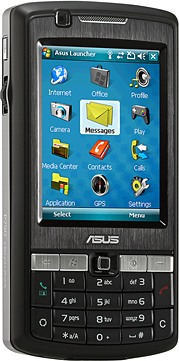
| 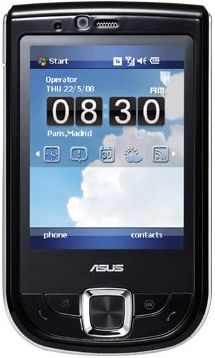
| 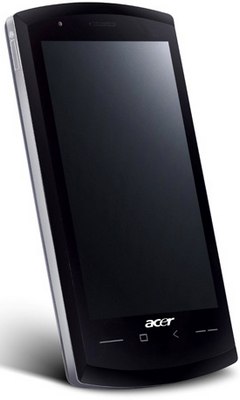
| 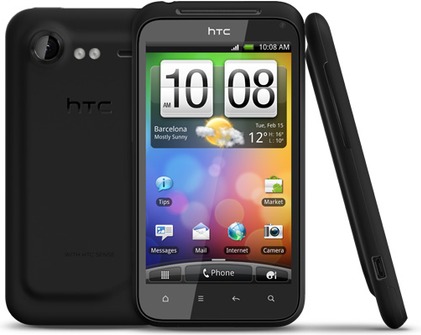
| 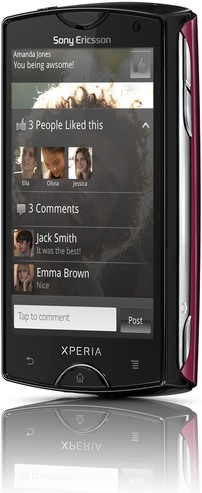
| 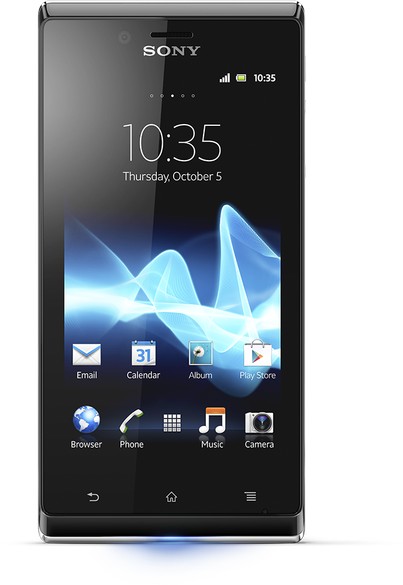
| 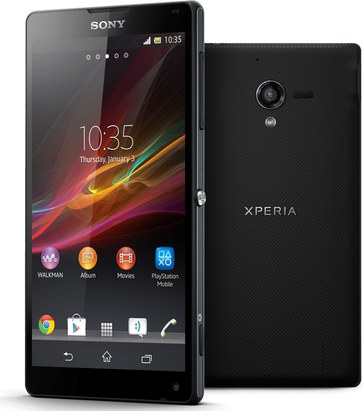
|
|
Remove all |
|  Add to compare Add to compare | |  Add to compare Add to compare | |  Add to compare Add to compare | |  Add to compare Add to compare | |  Add to compare Add to compare | |  Add to compare Add to compare | |  Add to compare Add to compare |
 Introduction Introduction |
Released |
2007 Dec 8 |
2009 Jan |
2009 Oct 7 |
2011 Apr |
2011 Aug |
2012 Sep |
2013 Apr |
Hardware Designer |
ASUSTeK Computer |
ASUSTeK Computer |
Acer |
HTC |
Sony Ericsson Mobile Communications |
Sony |
Sony Ericsson Mobile Communications |
Manufacturer |
ASUSTeK Computer |
ASUSTeK Computer |
Acer |
HTC |
|
|
Sony Ericsson Mobile Communications |
OEM ID |
|
|
|
|
|
PM-0160-BV |
PM-0340-BV |
Device Category |
Smartphone |
Smartphone |
Smartphone |
Smartphone |
Smartphone |
Smartphone |
Smartphone |
 Physical Attributes Physical Attributes |
Width |
58 mm |
60.5 mm |
63 mm |
64 mm |
52 mm |
61.2 mm |
69.3 mm |
Height |
113 mm |
102 mm |
118.6 mm |
120 mm |
88 mm |
124.3 mm |
131.6 mm |
Depth |
17.4 mm |
16 mm |
12 mm |
11.7 mm |
16 mm |
9.2 mm |
9.8 mm |
| Dimensions
| 2.28x4.45x0.69 inches |
2.38x4.02x0.63 inches |
2.48x4.67x0.47 inches |
2.52x4.72x0.46 inches |
2.05x3.46x0.63 inches |
2.41x4.89x0.36 inches |
2.73x5.18x0.39 inches |
Mass |
130 g |
120 g |
130 g |
135.5 g |
94 g |
124 g |
151 g |
|
4.59 ounces |
4.23 ounces |
4.59 ounces |
4.78 ounces |
3.32 ounces |
4.37 ounces |
5.33 ounces |
 Software Environment Software Environment |
Platform |
Windows (mobile-class) |
Windows (mobile-class) |
Windows (mobile-class) |
Android |
Android |
Android |
Android |
Operating System |
Microsoft Windows Mobile 6 Professional (Crossbow) |
Microsoft Windows Mobile 6.1 Professional |
Microsoft Windows Mobile 6.5 Professional (Titanium) |
Google Android 2.2 (Froyo) |
Google Android 2.3.3 (Gingerbread) |
Google Android 4.0.4 (Ice Cream Sandwich) |
Google Android 4.1.2 (Jelly Bean) |
|
|
AKU 1.2.3 |
AKU 5.0.0 |
|
|
|
|
Software Extras |
No |
No |
No |
Navigation software |
No |
No |
No |
 Application processor, Chipset Application processor, Chipset |
CPU Clock |
520 MHz |
800 MHz |
1000 MHz |
1000 MHz |
1000 MHz |
1000 MHz |
1500 MHz |
CPU |
Intel XScale PXA270 (Bulverde), 2004, 32 bit, single-core, 32 Kbyte I-Cache, 32 Kbyte D-Cache |
Marvell PXA930 (Tavor-MG1), 2008, 32 bit, single-core, 65 nm |
Qualcomm Snapdragon S1 QSD8250, 2008, 32 bit, single-core, 32 Kbyte I-Cache, 32 Kbyte D-Cache, 256 Kbyte L2, 65 nm, Qualcomm Adreno 200 GPU |
Qualcomm Snapdragon S2 MSM8255, 2010, 32 bit, single-core, 256 Kbyte L2, 45 nm, Qualcomm Adreno 205 GPU |
Qualcomm Snapdragon S2 MSM8255, 2010, 32 bit, single-core, 256 Kbyte L2, 45 nm, Qualcomm Adreno 205 GPU |
Qualcomm MSM7227A (Snapdragon S1), 2011, 32 bit, single-core, 45 nm, Qualcomm Adreno 200 enhanced GPU |
Qualcomm Snapdragon S4 Pro APQ8064, 2012, 32 bit, quad-core, 16 Kbyte I-Cache, 16 Kbyte D-Cache, 2048 Kbyte L2, 28 nm, Qualcomm Adreno 320 GPU |
 Operative Memory Operative Memory |
RAM Type |
SDRAM |
LPDDR SDRAM |
SDRAM |
Yes |
LPDDR SDRAM |
Yes |
LPDDR2 SDRAM |
RAM Capacity (converted) |
64 MiB RAM |
128 MiB RAM |
256 MiB RAM |
768 MiB RAM |
512 MiB RAM |
512 MiB RAM |
2 GiB RAM |
|
48.29 MiB user accessible RAM |
89 MiB user accessible RAM |
203.05 MiB user accessible RAM |
|
|
|
|
 Non-volatile Memory Non-volatile Memory |
Non-volatile Memory Interface |
Yes |
Yes |
Yes |
Yes |
Yes |
Yes |
Yes |
Non-volatile Memory Capacity (converted) |
256 MiB ROM |
256 MiB ROM |
512 MiB ROM |
2 GB ROM |
1024 MiB ROM |
4 GB ROM |
16 GB ROM |
|
154.2 MiB total user storage |
84 MiB total user storage |
312.21 MiB total user storage |
1130 MiB total user storage |
420 MiB total user storage |
2000 MiB total user storage |
|
 Display Display |
Display Diagonal |
67 mm |
72 mm |
96 mm |
101.6 mm |
76 mm |
101 mm |
127 mm |
|
2.6 inch |
2.8 inch |
3.8 inch |
4 inch |
3 inch |
4 inch |
5 inch |
Resolution |
240x320 |
480x640 |
480x800 |
480x800 |
320x480 |
480x854 |
1080x1920 |
Horizontal Full Bezel Width |
17.8 mm |
17.3 mm |
13.61 mm |
11.73 mm |
9.84 mm |
11.71 mm |
7.04 mm |
Display Area Utilization |
32.9% |
40.3% |
54.4% |
59.3% |
58.3% |
57.3% |
75.6% |
Pixel Density |
152 PPI |
282 PPI |
247 PPI |
233 PPI |
193 PPI |
246 PPI |
441 PPI |
Display Type |
Color TN-TFT LCD display |
Color TN-TFT LCD display |
Color TN-TFT LCD display |
Color PVA TFT LCD display |
Color TN-TFT LCD display |
Color TN-TFT LCD display |
Color PVA TFT LCD display |
| Display Subtype
| No |
No |
No |
SLCD |
No |
No |
Reality Display |
Number of Display Scales |
65536 |
65536 |
262144 |
|
16.8M |
16.8M |
16.8M |
Scratch Resistant Screen |
No |
No |
No |
No |
Yes |
Yes |
Yes |
 Graphical Subsystem Graphical Subsystem |
Graphical Controller |
|
|
Qualcomm Adreno 200 |
Qualcomm Adreno 205 |
Qualcomm Adreno 205 |
Qualcomm Adreno 200 |
Qualcomm Adreno 320 |
Dedicated Graphics Memory |
|
|
0.25 MiB |
0.25 MiB |
0.25 MiB |
0.25 MiB |
0.5 MiB |
| GPU Clock |
|
|
|
|
|
|
400 MHz |
 Audio/Video Interfaces Audio/Video Interfaces |
A/V Out |
No |
No |
No |
No |
No |
No |
MHL |
|
No |
No |
No |
No |
No |
No |
micro-USB |
 Audio Subsystem Audio Subsystem |
Microphone(s) |
mono |
mono |
mono |
mono |
mono |
mono |
stereo |
| Loudspeaker(s) |
mono |
mono |
mono |
Yes |
mono |
mono |
mono |
| Audio Output |
2.5mm |
mini-USB |
3.5mm |
3.5mm |
3.5mm |
3.5mm |
3.5mm |
 Cellular Phone Cellular Phone |
Supported Cellular Bands |
GSM900,
GSM1800,
GSM1900,
UMTS2100 (B1) bands |
GSM900,
GSM1800,
GSM1900,
UMTS2100 (B1) bands |
GSM850,
GSM900,
GSM1800,
GSM1900,
UMTS2100 (B1),
UMTS1900 (B2),
UMTS900 (B8) bands |
GSM850,
GSM900,
GSM1800,
GSM1900,
UMTS2100 (B1),
UMTS1700/2100 (B4),
UMTS900 (B8) bands |
GSM850,
GSM900,
GSM1800,
GSM1900,
UMTS2100 (B1),
UMTS900 (B8) bands |
GSM850,
GSM900,
GSM1800,
GSM1900,
UMTS2100 (B1),
UMTS900 (B8) bands |
GSM850,
GSM900,
GSM1800,
GSM1900,
UMTS2100 (B1),
UMTS1900 (B2),
UMTS1700/2100 (B4),
UMTS850 (B5),
UMTS900 (B8) bands |
Supported Cellular Data Links |
CSD,
GPRS,
GPRS C10,
EDGE,
EDGE MSC10,
UMTS,
HSDPA,
HSDPA 3.6 data links |
CSD,
GPRS,
GPRS C10,
EDGE,
EDGE MSC10,
UMTS,
HSDPA data links |
CSD,
GPRS,
GPRS C10,
EDGE,
EDGE MSC10,
UMTS,
HSUPA,
HSUPA 5.8,
HSDPA,
HSDPA 7.2 data links |
CSD,
GPRS,
GPRS C12,
EDGE,
EDGE MSC12,
UMTS,
HSUPA,
HSUPA 2.0,
HSDPA,
HSDPA 14.4 data links |
GPRS,
GPRS C10,
EDGE,
UMTS,
HSUPA,
HSUPA 5.8,
HSDPA,
HSDPA 7.2 data links |
GPRS,
EDGE,
UMTS,
HSUPA,
HSUPA 5.8,
HSDPA,
HSDPA 7.2 data links |
GPRS,
GPRS C12,
EDGE,
UMTS,
HSUPA,
HSUPA 5.8,
HSDPA,
HSPA+ 21.1,
HSPA+ 42.2 data links |
SIM Card Slot |
Mini-SIM (2FF) |
Mini-SIM (2FF) |
Mini-SIM (2FF) |
Yes |
Yes |
Yes |
Yes |
Complementary Phone Services |
Voice transmission,
Voice speaker,
Vibrate,
Speakerphone |
Voice transmission,
Voice speaker,
Vibrate,
Speakerphone |
Voice transmission,
Voice speaker,
Vibrate,
Speakerphone |
Voice transmission,
Voice speaker,
Vibrate,
Speakerphone |
Voice transmission,
Voice speaker,
Vibrate,
Speakerphone |
Voice transmission,
Voice speaker,
Vibrate,
Speakerphone |
Voice transmission,
Voice speaker,
Vibrate,
Speakerphone,
ANC,
HD Voice |
 Secondary Cellular Phone Secondary Cellular Phone |
 Control Peripherals Control Peripherals |
Touchscreen Type |
Resistive screen |
Resistive screen |
Resistive screen |
Capacitive multi-touch screen |
Capacitive multi-touch screen |
Capacitive multi-touch screen |
Capacitive multi-touch screen |
Keyboard |
Built-in numeric |
No |
No |
No |
No |
No |
No |
| Number of keys
| 24 |
|
|
|
|
|
|
Directional Pad |
5-way |
5-way |
No |
No |
No |
No |
No |
Scroll Wheel |
3-way non-rotary scroll wheel |
No |
No |
No |
No |
No |
No |
 Communication Interfaces Communication Interfaces |
Expansion Interfaces |
SDIO,
TransFlash,
microSD,
microSDHC |
SDIO,
TransFlash,
microSD,
microSDHC |
SDIO,
TransFlash,
microSD,
microSDHC |
TransFlash,
microSD,
microSDHC |
TransFlash,
microSD,
microSDHC |
TransFlash,
microSD,
microSDHC |
TransFlash,
microSD,
microSDHC,
microSDXC |
USB |
USB 1.1 |
USB 1.1 |
USB 2.0 |
USB 2.0 |
USB 2.0 |
USB 2.0 |
USB 2.0 |
|
USB FS (12 Mbps) |
USB FS (12 Mbps) |
USB HS (480 Mbps) |
USB HS (480 Mbps) |
USB HS (480 Mbps) |
USB HS (480 Mbps) |
USB HS (480 Mbps) |
| USB Services
| USB charging |
USB charging |
USB charging |
USB charging |
USB charging |
USB charging |
USB charging,
USB Host,
USB OTG 1.3,
USB PD |
| USB Connector
| USB Mini-B (mini-USB) |
USB Mini-B (mini-USB) |
USB Mini-B (mini-USB) |
USB Micro-B (Micro-USB) |
USB Micro-B (Micro-USB) |
USB Micro-B (Micro-USB) |
USB Micro-AB |
Bluetooth |
Bluetooth 2.0 + EDR |
Bluetooth 2.0 + EDR |
Bluetooth 2.1 + EDR |
Bluetooth 2.1 + EDR |
Bluetooth 2.1 + EDR |
Bluetooth 2.1 + EDR |
Bluetooth 4.0 |
Wireless LAN |
802.11b,
802.11g |
802.11b,
802.11g |
802.11b,
802.11g |
802.11b,
802.11g,
802.11n |
802.11b,
802.11g |
802.11b,
802.11g,
802.11n |
802.11a,
802.11b,
802.11g,
802.11n |
| Wireless Services
| No |
No |
No |
DLNA,
Wi-Fi Tethering |
DLNA |
DLNA,
Wi-Fi Tethering |
No |
NFC |
No |
No |
No |
No |
No |
No |
Yes |
IR |
No |
No |
No |
No |
No |
No |
Yes |
|
No |
No |
No |
No |
No |
No |
Yes |
 Multimedia Broadcast Multimedia Broadcast |
FM Radio Receiver |
No |
No |
FM radio (88-108 MHz) with RDS |
FM radio (88-108 MHz) with RDS |
FM radio (88-108 MHz) with RDS |
FM radio (88-108 MHz) with RDS |
FM radio (88-108 MHz) with RDS |
 Satellite Navigation Satellite Navigation |
Complementary Satellite Services |
No |
QuickGPS |
Geotagging,
QuickGPS |
A-GPS,
Geotagging,
QuickGPS |
A-GPS,
Geotagging,
QuickGPS |
A-GPS,
Geotagging,
QuickGPS |
Simultaneous GPS,
A-GPS,
Geotagging,
QuickGPS |
Supported GLONASS protocol(s) |
No |
No |
No |
No |
No |
No |
L1OF |
 Primary Camera System Primary Camera System |
Camera Placement |
Rear |
Rear |
Rear |
Rear |
Rear |
Rear |
Rear |
Camera Image Sensor |
CMOS |
CMOS |
CMOS |
CMOS |
CMOS |
CMOS |
CMOS |
Number of effective pixels |
3.1 MP camera |
3.1 MP camera |
4.9 MP camera |
8.0 MP camera |
5.0 MP camera |
5.0 MP camera |
13.0 MP camera |
Zoom |
1.0 x optical zoom |
1.0 x optical zoom |
1.0 x optical zoom |
1.0 x optical zoom |
1.0 x optical zoom |
1.0 x optical zoom |
1.0 x optical zoom |
|
|
|
|
|
|
4.0 x digital zoom |
16.0 x digital zoom |
Focus |
CD AF |
CD AF |
CD AF |
CD AF |
CD AF |
CD AF |
CD AF |
Video Recording |
320x240 pixel |
352x288 pixel |
640x480 pixel |
1280x720 pixel |
1280x720 pixel |
800x480 pixel |
1920x1080 pixel |
|
15 fps |
24 fps |
|
24 fps |
|
|
30 fps |
Flash |
No |
No |
single LED |
dual LED |
single LED |
single LED |
single LED |
Camera Extra Functions |
No |
Macro mode |
Macro mode |
EIS,
Face detection |
EIS,
Touch focus,
Face detection,
Smile detection |
EIS,
EIS (video),
Touch focus,
Face detection,
Smile detection |
EIS,
EIS (video),
HDR photo,
HDR video,
Touch focus,
Macro mode,
Panorama Photo,
Face detection,
Smile detection,
3D Panorama Photo |
 Secondary Camera System Secondary Camera System |
Secondary Camera Placement |
Front |
Front |
No |
Front |
No |
Front |
Front |
Secondary Camera Sensor |
CMOS |
CMOS |
No |
CMOS |
No |
CMOS |
CMOS |
Secondary Camera Number of pixels |
0.3 MP sec. cam |
0.3 MP sec. cam |
|
1.3 MP sec. cam |
|
0.3 MP sec. cam |
2.1 MP sec. cam |
Secondary Video Recording |
320x240 pixel |
320x240 pixel |
|
|
|
640x480 pixel |
|
 Built-in Sensors Built-in Sensors |
Built-in compass |
No |
No |
No |
Yes |
No |
Yes |
Yes |
Built-in accelerometer |
No |
No |
Yes |
Yes |
Yes |
Yes |
Yes |
Built-in gyroscope |
No |
No |
No |
No |
No |
No |
Yes |
Additional sensors |
No |
No |
L sensor,
P sensor |
No |
No |
No |
L sensor,
P sensor |
 Ingress Protection Ingress Protection |
Protection from solid materials |
Yes |
Yes |
Yes |
Yes |
Yes |
Yes |
Yes |
Protection from liquids |
Yes |
Yes |
Yes |
Yes |
Yes |
Yes |
Yes |
 Power Supply Power Supply |
Battery |
Li-ion |
Li-ion |
Li-ion |
Li-ion |
Li-ion polymer (LiPo) |
Li-ion |
Li-ion polymer (LiPo) |
|
removable |
removable |
removable |
removable |
removable |
removable |
built-in |
|
1-cell |
1-cell |
1-cell |
1-cell |
1-cell |
1-cell |
1-cell |
Nominal Battery Capacity |
1300 mAh battery |
1300 mAh battery |
1350 mAh battery |
1450 mAh battery |
1200 mAh battery |
1750 mAh battery |
2370 mAh battery |
Estimated Battery Life |
11.0 hours |
|
|
|
|
|
|
 Geographical Attributes Geographical Attributes |
Market Countries |
No |
No |
No |
USA |
No |
No |
No |
Mobile Operator |
|
|
|
T-Mobile USA |
|
|
Cincinnati Bell Wireless |
 Datasheet Attributes Datasheet Attributes |
Data Integrity |
Final |
Final |
Final |
Preliminary |
Final |
Final |
Preliminary |
Added |
2007-07-27 21:22 |
2008-09-25 10:45 |
2009-04-29 11:32 |
2011-02-16 18:39 |
2011-05-10 21:17 |
2012-08-23 14:34 |
2012-11-04 11:42 |